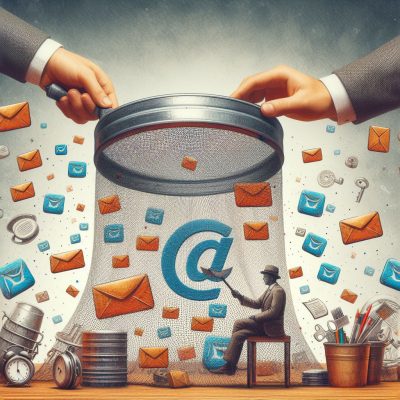Win-Back Email Strategies That Go Beyond Cart Abandonment
February 5, 2020
We’ve all heard the statistic that acquiring a new customer can cost up to five times more than retaining an existing one. But after your cart abandonment email campaign has run its course, is it time to give up on that ROI, or is it time to go beyond cart abandonment with a winback email strategy?
A win-back email strategy aims to recover customers lost through browse abandonment, cart abandonment, or a finalized purchase by re-engaging with them further down the line. This can benefit your marketing ROI, customer engagement levels, and overall conversion and customer lifetime value rates. However, a win-back email strategy isn’t without its risks.
According to Adobe, being emailed too often, being sent irrelevant offers, and poorly personalized emails are among the top consumer annoyances when it comes to marketing emails. And, if you read our recent blog on ecommerce email deliverability, you’ll know that poorly executed emails can result in the black labeling of your email domain and the inability to land in inboxes of future customers.
So, how do you execute a winning win-back email strategy? Let’s take a look.
The Essential Components of a Win-Back Email Strategy
There are three essential ingredients of a successful win-back email strategy. These are:
Timing
As already mentioned, being emailed too often by a brand is deemed annoying by consumers. Considering that you have just finished hitting this customer with a cart abandonment or browse abandonment recovery campaign of roughly three emails in short succession, it’s time for a little breathing space.
Research conducted by MarketingSherpa found that the top four preferences for email frequency were at least monthly, at least weekly, weekly, and monthly.

Therefore, it’s recommended that you give your potential customer a little time off. Have CartStack send their information to your CRM using Zapier, and then schedule them into the appropriate marketing campaign when the timing is right.
Relevance
Speaking of appropriate marketing campaigns, the second essential component of a win-back email is relevance. You’ve already gathered essential contact and browsing information from your website visitor using real-time data capture – use it.
By sending an email that’s personalized to your potential customer, you increase the chances of future engagement by 80%. And it makes sense. Sending someone who spent 15 minutes browsing your dog toys an offer on cat food isn’t likely to respond, and may even blacklist you if they feel particularly offended.
Value
Finally, your win-back email strategy must deliver something of value to the recipient, in the same way that your cart abandonment emails do.
Value not only engages customer interest, but it also ignites the reciprocity principle. The reciprocity principle is that human beings are more likely to do you a favor if you’ve done them one first. So, by offering a potential customer something of value, they feel compelled to return the favor by clicking the link or buying a product.
Three Win-Back Email Strategies for your Store
Now that we’ve shared the essential components of a win-back email, it’s time to delve into the different types of ecommerce win-back email strategies that you can implement for your store.
There are three main win-back email strategies that you can implement to win-back website visitors, entice conversions, and start longer-term customer relationships. These are:
1. Converting the converted (past customers)
Let’s start with the easiest of them all: previous customers. If your on-site cart abandonment campaigns or post-visit recovery emails have worked, your hard work doesn’t stop upon a sale.
Just because someone bought something from your store, doesn’t mean that they’ll want to rush back or even think of you when they’re next making a purchase. Repeat customers require repeat engagement, which is what this win-back email strategy is for.
Re-converting the converted can be achieved with a drip-feed email campaign that includes the following:
- A welcome email – according to HubSpot, welcome emails that thank customers for their purchase and welcome them as a customer generate twice the engagement of regular marketing emails. Why? Because they’re viewed as a sincere message of thanks, rather than an in-your-face sell.
Follow up all purchases with a simple thank you, welcome, and “we’re here if you need us!”

(Source: ReferralCandy)
- An invitation email – once you’ve got the pleasantries out of the way, it’s time to invite your new customer to become a long-term customer by offering them something of value.
69% of consumer purchases are influenced by loyalty schemes, and 23% of online shoppers are influenced by social media recommendations and post. Inviting customers to your loyalty scheme or social media account is a quick way to increase engagement and give you another communication channel.

(Source: ReferralCandy)
- A personalized offer – anyone in a longterm relationship knows that there are two things you must not forget: birthdays and anniversaries.
If you want to increase customer lifetime value and win-back that customer for repeat purchases, send them offers, discounts, and well-wishes on their birthday (28th December if you’re asking), and any anniversaries.

(Source: Campaign Monitor)
2. Persuading the undecided (high purchase-intent shoppers)
If your on-site and abandoned cart email strategies didn’t result in conversion the first time, that leaves you with two different types of shoppers, the first being a high purchase-intent shopper.
This is the person who spent a long time on your website, added products to their basket, and even clicked through on your cart abandonment email. But they didn’t purchase anything, not because they didn’t want to but because they couldn’t decide, life got in the way, or payday was just that little too far away.
The good news is that these shoppers are ripe for the following win-back emails.
- An incentivizing email – humans are naturally indecisive, but when you place an offer or discount in front of them, the powers of loss aversion and value take over and allow the subconscious to make a quick decision before losing out.
By following an abandoned cart campaign with a further discount or offer, you show a potential customer that you’re still there for them when they’re ready for you.

(Source: Shopify)
- A content-driven email – sometimes, a lack of knowledge is behind a shopper’s indecision. Perhaps they’re buying something they’ve never bought before, and they’re not quite sure what to look for. Or, maybe they don’t know enough about your brand to give you their hard-earned cash.
To overcome this problem, you can send a win-back email that upskills your potential customer. Content such as buying guides, user reviews, and testimonials can give your audience the knowledge they need to become a customer.

(Source: Shopify)
- A new arrivals email – when a customer abandons your website, they no longer know what’s on your website. And a lot can change in the space of a week, month, or season.
An email sharing details of your new arrivals, product lines, or seasonal offers is the perfect excuse to contact a customer with fresh content on the basis of, “we thought you might like to see these,” rather than “we want you to buy from us.”

(Source: Neil Patel)
3. Engaging the unengaged (low purchase-intent shoppers)
The second type of abandoning shopper is the low purchase-intent shopper.
This is the person who briefly visited your website, didn’t anything to their basket, and didn’t engage with your browse abandonment email campaign. But, importantly, they didn’t unsubscribe – meaning that there’s still an ounce of intent worth fighting for.
A win-back email strategy focused on delivering value through content works really well with this audience. The types of emails that you could send include:
- A storytelling email – shoppers are naturally less enthused about brands they do not know. They have no common ground or existing relationship to build upon, but you can change this.
By sending an email that introduces your brand and tells your story, you immediately involve them in that story. This email isn’t about selling or persuading, it’s about introducing yourself.

(Source: Digital Marketer)
- An educational email – a low purchase-intent shopper may have been shopping around for knowledge rather than products. That’s not to say that they won’t be shopping for products in the future, but for now, they’re on an information-gathering expedition.
Keep these shoppers engaged by sending them knowledge rather than products. Buying guides, blog posts, video content, and reading recommendations help engage these shoppers while demonstrating your own expertise in a particular industry.

(Source: Digital Marketer)
- A goodbye email – this is an unconventional one, but if you’re a risk-taker, it’s for you. A low purchase-intent shopper who didn’t respond to your browse abandonment email and, thus far, hasn’t responded to your win-back emails, is unlikely to become a customer.
Test their engagement by saying goodbye. Send an email saying that you notice they haven’t responded to your email and, therefore, you’re going to remove them from your email distribution list unless they tell you otherwise. Include a clear link to get in touch, click through to your website, and follow you on social media, and then leave the ball in their court.
Final thoughts
On-site campaigns will convert a certain number of customers, and recovery strategies will convert more – but that doesn’t mean the stragglers are lost forever. A well-executed win-back email strategy has the power to squeeze the final last drop out of your website visitors – and why not? You spent time and money attracting them to your website, it’s only fair that you do all you can to help them find what they were searching for.





